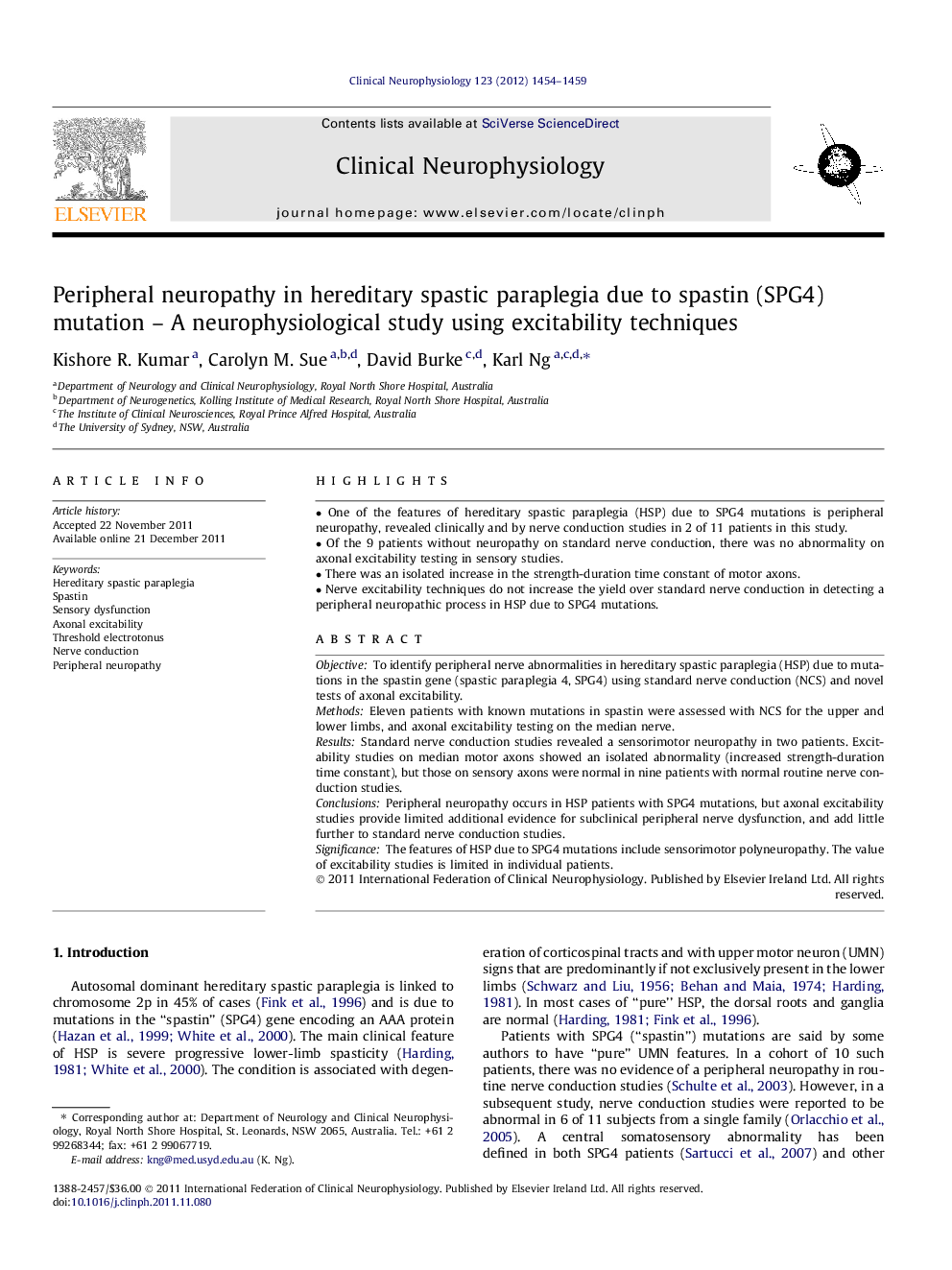| Article ID | Journal | Published Year | Pages | File Type |
|---|---|---|---|---|
| 3045511 | Clinical Neurophysiology | 2012 | 6 Pages |
ObjectiveTo identify peripheral nerve abnormalities in hereditary spastic paraplegia (HSP) due to mutations in the spastin gene (spastic paraplegia 4, SPG4) using standard nerve conduction (NCS) and novel tests of axonal excitability.MethodsEleven patients with known mutations in spastin were assessed with NCS for the upper and lower limbs, and axonal excitability testing on the median nerve.ResultsStandard nerve conduction studies revealed a sensorimotor neuropathy in two patients. Excitability studies on median motor axons showed an isolated abnormality (increased strength-duration time constant), but those on sensory axons were normal in nine patients with normal routine nerve conduction studies.ConclusionsPeripheral neuropathy occurs in HSP patients with SPG4 mutations, but axonal excitability studies provide limited additional evidence for subclinical peripheral nerve dysfunction, and add little further to standard nerve conduction studies.SignificanceThe features of HSP due to SPG4 mutations include sensorimotor polyneuropathy. The value of excitability studies is limited in individual patients.
► One of the features of hereditary spastic paraplegia (HSP) due to SPG4 mutations is peripheral neuropathy, revealed clinically and by nerve conduction studies in 2 of 11 patients in this study. ► Of the 9 patients without neuropathy on standard nerve conduction, there was no abnormality on axonal excitability testing in sensory studies. ► There was an isolated increase in the strength-duration time constant of motor axons. ► Nerve excitability techniques do not increase the yield over standard nerve conduction in detecting a peripheral neuropathic process in HSP due to SPG4 mutations.
